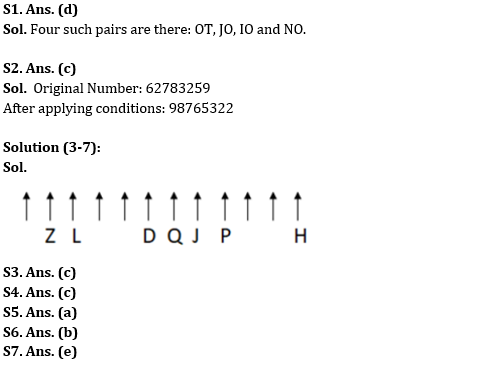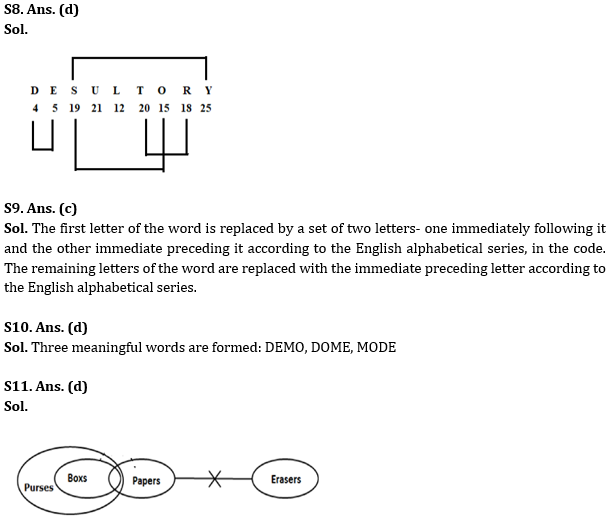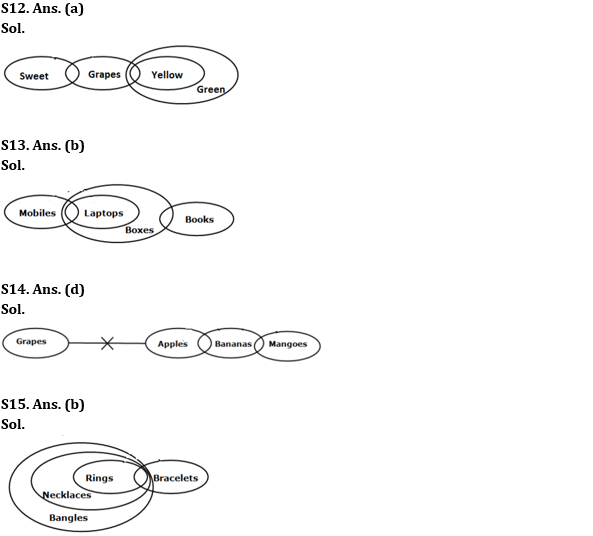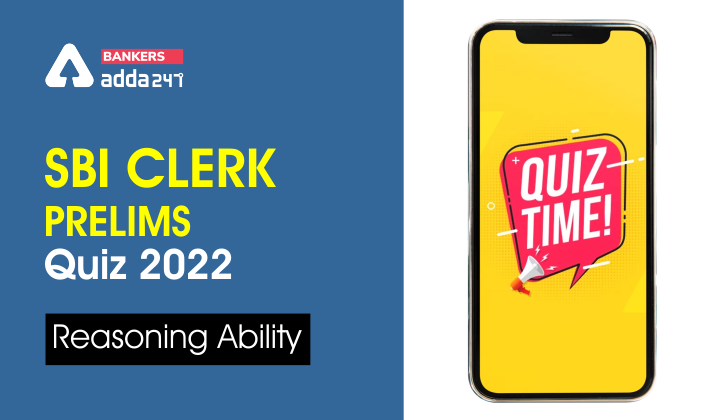Q1. How many such pairs of letters are there in the word ‘OBJECTION’ each of which has as many letters between them in the word as in the English alphabet (Both forward and backward)?
(a) One
(b) Two
(c) Three
(d) More than three
(e) None
Q2. If all the digits in the number ‘62783259’ are arranged in descending order within the number from left to right, then which of the following digit(s) will remain at the same position?
(a) 3
(b) 5
(c) 7
(d) 9
(e) 2
Directions (3-7): Study the following data carefully and answer the questions accordingly.
A certain number of people sit in a straight line facing the north direction. Z sits to the left of D but not immediately left. At least one person sits between D and P. L sits third from an end. J sits second to the right of D. Four people sit between Q and Z. Five people sit between P and L. Four people sit between L and J. D sits sixth to the left of H. Q does not sit to the right of J. At most 12 people are there in the arrangement.
Q3. How many people sit in this arrangement?
(a) 14
(b) 11
(c) 12
(d) 13
(e) None of these
Q4. Who among the following sits second from the left end?
(a) P
(b) Q
(c) Z
(d) H
(e) None of these
Q5. Who are the immediate neighbours?
(a) Q, J
(b) J, D
(c) P, L
(d) L, J
(e) None of these
Q6. How many people are sitting to the right of P?
(a) Five
(b) Three
(c) Four
(d) Six
(e) None of these
Q7. Find the correct statement/statements from the following.
I. Three people sit to the right of J.
II. Two people sit between L and Q.
III. Z and L are not immediate neighbours.
(a) Both II and III
(b) Only I
(c) Only III
(d) All are correct
(e) None is correct
Q8. How many such pairs of letters are there in the word DESULTORY each of which has as many letters between them in the word (in both forward and backward directions) as in the English alphabet?
(a) One
(b) Two
(c) Three
(d) Four
(e) More than four
Q9. In a certain code, POETRY is written as QONDSQX and OVER is written as PNUDQ. How is MORE written in that code language?
(a) LNNQD
(b) NNNQD
(c) NLNQD
(d) NLPQD
(e) None of these
Q10. If a four-letter meaningful English word can be formed with the first, second, fourth and fifth letters from the left end of the word MELODRAMA, which of the following will be the third letter of that word? If no such word can be made, give ‘Z’ as the answer and if more than one such word can be made, give ‘L’ as the answer.
(a) M
(b) D
(c) Z
(d) L
(e) None of the above
Directions (11-15): In the question below three statements are given followed by the conclusions. You have to take the given statements to be true even if they seem to be at variance with commonly known facts. Read all the conclusions and then decide which of the given conclusions logically follows from the given statements disregarding commonly known facts.
Q11. Statements: No Papers are Erasers. Only a few Boxes are Papers. All Boxes are Purses.
Conclusions:
I. All Purses being Papers is Possibility.
II. No Erasers are Boxes.
(a) Only I follows
(b) Only II follows
(c) Either I or II follows
(d) Neither I nor II follows
(e) Both I and II follow
Q12. Statements: All Yellow is Green. Only a few Sweet are Grapes. Some Yellow are Grapes.
Conclusions:
I. Some Grapes is Green.
II. No Green is Sweet.
(a) Only I follows
(b) Only II follows
(c) Either I or II follows
(d) Neither I nor II follows
(e) Both I and II follow
Q13. Statements: All Laptops are Boxes. Only a few Mobiles are Laptops. Some Boxes are Books.
Conclusions:
I. Some Mobiles are Books.
II. Some Boxes are Mobiles.
(a) Only I follows
(b) Only II follows
(c) Either I or II follows
(d) Neither I nor II follows
(e) Both I and II follow
Q14. Statements: No Apples are Grapes. Only a few Bananas are Mangoes. Only a few Apples are Bananas.
Conclusions:
I. Some Apples are Mangoes.
II. Some Bananas are Grapes.
(a) Only I follows
(b) Only II follows
(c) Either I or II follows
(d) Neither I nor II follows
(e) Both I and II follow
Q15. Statements: All Rings are Necklaces. All Necklaces are Bangles. Only a few Rings are Bracelets.
Conclusions:
I. No Necklaces are Bracelets.
II. Some Bangles are Bracelets.
(a) Only I follows
(b) Only II follows
(c) Either I or II follows
(d) Neither I nor II follows
(e) Both I and II follow
Solutions








 GA Capsule for SBI Clerk Mains 2025, Dow...
GA Capsule for SBI Clerk Mains 2025, Dow...
 The Hindu Review October 2022: Download ...
The Hindu Review October 2022: Download ...
 IIFCL Assistant Manager Result 2025 Out,...
IIFCL Assistant Manager Result 2025 Out,...





